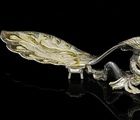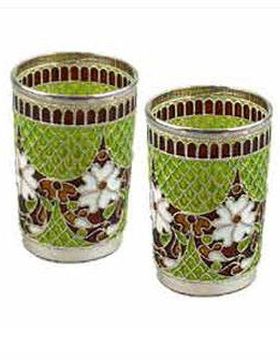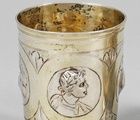
С 23 июня в ювелирных магазинах покупатель может обнаружить отечественные ювелирные изделия из серебра без пробы (п. 2 ст. 12.1 Федерального закона от 26 марта 1998 г. № 41-ФЗ "О драгоценных металлах и драгоценных камнях"). Однако это вовсе не означает, что он стал более уязвимым.
Дело в том, что обязательное опробирование и клеймение государственным пробирным клеймом ранее осуществлялось только в отношении серебряных изделий массой свыше трех граммов. Но в ювелирных магазинах представлено достаточное количество изделий, масса которых ниже (например, обычные серебряные кольца и серьги без крупных камней), и где, следовательно, проба отсутствовала, при этом данный факт не означал потерю желания у покупателя в приобретении изделия.
Стоит отметить, что норма об обязательном существовании именника (знака изготовителя), который подлежит регистрации Федеральной пробирной палатой, у ювелирного изделия сохранилась (п. 6 Постановления Правительства РФ от 21 октября 2015 г. № 1127 "Об утверждении Правил регистрации, изготовления именников, а также постановки и уничтожения их оттисков").
Более того, достаточно часто производители добровольно ставили пробу на изделия, масса которых не превышала трех грамм. Наличие пробы на ювелирном изделии показывает количество драгоценного металла в сплаве, что является сложившимся признаком качества.
Именно поэтому, скорее всего, производители продолжат ставить пробы на серебряные изделия.
Какие стандарты качества предъявляются к изделиям из серебра?
Статьей 469 Гражданского кодекса закреплено, что, если существуют обязательные требования к качеству товара, изготовленного для продажи, то предприниматель обязан передать покупателю товар, соответствующий им. Применительно к серебру такие обязательные требования установлены в ОСТ 117-3-002-95 "Изделия ювелирные из драгоценных металлов. Общие технические условия", утв. Минприбором СССР от 1 июля 1988 г. (далее – ОСТ 117-3-002-95). В случае экспертизы на предмет определения соответствия ювелирного изделия качеству эксперт сравнивает заявленные на этикетке (бирке) параметры: состав, пробу, размер, указанные производителем, с фактическими параметрами ювелирного изделия.
При этом даже этикетка должна быть выполнена в соответствии с требованиями ОСТ 117-3-002-95 (апелляционное определение Московского городского суда от 18 января 2019 г. по делу № 33-447/2019): каждое изделие должно иметь этикетку с реквизитами, обязательным элементом которых является наименование и проба драгоценного металла.
Иными словами изменения коснулись исключительно требований Федерального закона от 26 марта 1998 г. № 41-ФЗ "О драгоценных металлах и драгоценных камнях", где определяется добровольность опробирования и клеймения, в то время как требования ОСТ 117-3-002-95 к ювелирным изделиям остались неизменными. Таким образом, несмотря на отсутствие пробы на самом ювелирном изделии, потребитель имеет возможность получить информацию о количестве драгоценного металла в сплаве из содержания прикрепленной к нему бирки.
Отсутствие такой информации, либо несоответствие действительной пробы изделия заявленным характеристикам, позволяет потребителю отказаться от исполнения договора купли-продажи и потребовать возврата уплаченной за товар суммы в соответствии с ч. 1 ст. 18 Закона от 7 февраля 1992 г. № 2300 "О защите прав потребителей" (далее – Закон о защите прав потребителей).
На практике суды активно применяют указанные положения закона, расторгая договор купли-продажи ювелирного изделия и взыскивая с продавца в пользу покупателя денежные средства, неустойку, компенсацию морального вреда, убытки, штраф и судебные расходы на основании экспертных заключений с участием экспертов-геммологов в случае нарушения требований ОСТ 117-3-002-95 к маркировке ярлыков (отсутствовало указание пробы), а также явного несоответствия изделия заявленным характеристикам изготовителя, указанным в документах, предоставленных продавцом (апелляционное определение Нижегородского областного суда от 17 февраля 2015 г. по делу № 33-12247/2015).
Как защитить себя от подделки серебряных изделий?
Во-первых, необходимо тщательно подходить к вопросу выбора ювелирного магазина.
Однако, даже это не позволяет исключить вероятность покупки поддельного товара. В силу того, что только специалист может определить подлинность изделия, действия потребителя могут быть направлены только на минимизацию потерь от покупки подделки путем проявления должной осмотрительности. Именно поэтому потребитель должен внимательно изучать информацию на ярлыке изделия, информацию об изготовителе, проверять все документы, прилагаемые к изделию.
Если в магазине покупателю не выдан товарный чек, а бирка заполнена неточно и неполно, и, если информация в документах изложена на иностранном языке без перевода, подобные обстоятельства расцениваются судами как предоставление ненадлежащей информации.
Если продавец отказывается исполнить свою обязанность по предоставлению покупателю достоверной информации о товаре, то потребитель вправе потребовать предоставления необходимой и достоверной информации об изготовителе (исполнителе, продавце), режиме его работы и реализуемых им товарах (ч. 1 ст. 8 Закона о защите прав потребителей). В случае отказа продавца потребитель может потребовать от продавца возмещения убытков, причиненных необоснованным уклонением от заключения договора (ч. 1 ст. 12 Закона о защите прав потребителей).
Что делать, если продали изделие не из серебра?
Закон о защите прав потребителей предусматривает несколько норм, раскрывающих данное нарушение.
Во-первых, у потребителя есть безусловное право на приобретение товаров надлежащего качества (ст. 4 Закона о защите прав потребителей), а также право на получение информации о товарах (ст. 8 Закона о защите прав потребителей). Данному праву корреспондирует обязанность продавца уведомить покупателя о качественных характеристиках товара и передать соответствующий товар.
Если покупателю продается ювелирное изделие не из серебра, как серебряное, то имеет место введение потребителя в заблуждение относительно потребительских свойств или качества товара. В данном случае, перед потребителем недобросовестный продавец.
Более того, законодательством предусмотрена ответственность за введение потребителей в заблуждение относительно потребительских свойств или качества товара (ст. 14.7 КоАП) в виде наложения административного штрафа на юридических лиц – от 100 тыс. до 500 тыс. руб. Покупателю при обнаружении рассматриваемого нарушения следует обратиться в территориальное управление Роспотребнадзора с целью привлечения недобросовестного продавца к административной ответственности.
Однако, помимо обращения в государственный орган, покупатель, в первую очередь, имеет право в соответствии со ст. 12 Закона о защите прав потребителей отказаться от исполнения договора купли-продажи и потребовать возврата уплаченной за товар суммы и возмещения других убытков. С таким требованием он может обратиться в сам магазин, а при отказе последнего – подать соответствующее исковое заявление в суд.























